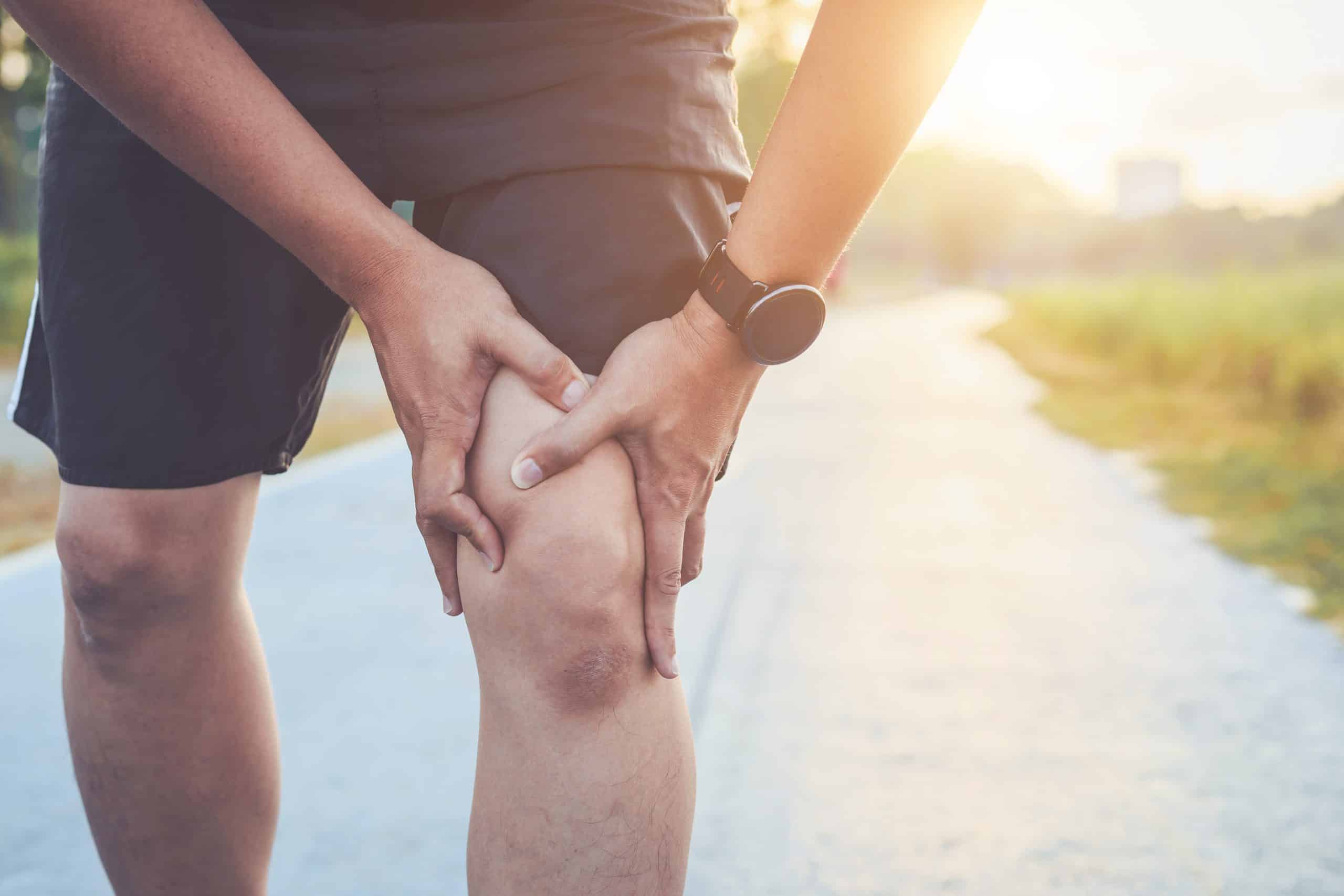What Causes Bursitis in the Knee? Top 5 Causes of Knee Bursitis
What causes bursitis in the knee?
Knee bursitis is often caused by repetitive motions, such as kneeling, that put pressure on the bursa. This pressure can cause the bursa to become inflamed, leading to the symptoms of bursitis. That’s why knee bursitis is particularly common amongst individuals who spend considerable time kneeling on hard surfaces or placing pressure on the knee cap,
#1. Frequent & Sustained Pressure
Sed ut perspiciatis unde omnis iste natus error sit voluptatem accusantium our locations totam rem aperiam, eaque ipsa quae ab illo inventore veritatis et quasi architecto beatae vitae dicta sunt explicabo. Nemo enim ipsam voluptatem quia voluptas sit aspernatur aut odit aut fugit, sed quia consequuntur magni dolores eos qui ratione voluptatem sequi nesciunt. Neque porro quisquam est, qui dolorem ipsum quia dolor sit amet, consectetur, adipisci velit, sed quia non numquam eius modi Learn more about that topic here
#2. Overuse/ Strenuous Activities
Knee bursitis is often the result of overuse or repetitive strenuous activities. These activities put pressure on the bursa and can cause it to become inflamed. Activities that can lead to knee bursitis include running, jumping, squatting, lunging, and climbing stairs. People who engage in these activities on a regular basis are more likely to develop knee bursitis.

Sick of your Knee Pain?
Book an Appointment!
We offer free insurance verification! Fill out the form and expect a call from one of our agents:
#3. Injury or Trauma
One of the most common causes of knee bursitis is trauma or injury to the area. This can happen from a direct blow, such as from a fall, or from repetitive motion that puts stress on the joint. If you sustain a major knee injury from a fall or accident, you have a high risk of bursitis.
#4. Bacterial Infection
Knee bursitis can also happen because of a bacterial infection — this is known as septic bursitis. This is a serious condition that can lead to joint damage and life-threatening blood poisoning (sepsis). The bacteria enters the bursa through a small cut or scrape on the skin near the knee or through the bloodstream. Septic bursitis is a medical emergency necessitating immediate diagnosis and treatment.
#5. Arthritic Complications
Arthritis is a degenerative disease that affects the cartilage and bones of the joints. It can cause the joints to become inflamed and painful. Gout is a type of arthritis that occurs when uric acid crystals build up in the joints, leading to inflammation and pain. Knee bursitis can happen because of complications related to osteoarthritis, rheumatoid arthritis, and gout in the knee.

Find Your Nearest Knee Pain Treatment Center
Our Manhattan NY knee pain clinic is conveniently located on 290 Madison Avenue Suite 203
Symptoms of knee bursitis include:
- Pain and tenderness around the kneecap
- Swelling in the knee
- Warmth in the knee
- Stiffness in the knee
- Difficulty moving the knee
- Knee hurts to touch but there’s no bruise
- Medial pain when bending knee
- Knee feels like it’s burning
- Hurts to put weight on the knee
- Knee pain when kneeling on the floor
What are the risk factors for knee bursitis?
Knee bursitis, also known as prepatellar bursitis, is a condition that affects the small, fluid-filled sacs (bursae) that cushion the bones, tendons, and muscles near your joints. When the bursa becomes inflamed, it can cause pain and swelling. The following are the primary risk factors for bursitis in the knee or prepatellar bursitis:
- Repetitive movements, such as kneeling or squatting, are the most common cause of knee bursitis. This is why the condition is often seen in people who do a lot of manual labor, such as carpenters, plumbers, and gardeners.
- Age and arthritis are also risk factors for knee bursitis. As you age, your bursae become less elastic and more prone to inflammation. If you have arthritis, the condition can damage the cartilage that protects your joints, exposing the bursae to friction and irritation.
- Being overweight or having a job that requires you to stand or walk on hard surfaces for long periods of time can also put you at risk for developing knee bursitis.
If you have any of these risk factors, you can take steps to protect your knees and reduce your risk of developing bursitis. For example, if you are overweight, losing weight can help reduce the amount of stress on your knees. If you have a job that requires you to kneel or squat for long periods of time, take breaks often to rest your knees. And if you have arthritis, be sure to take your medications as prescribed and see your doctor for regular checkups.
How do you heal bursitis of the knee?
There are two common types of bursitis- septic bursitis and aseptic bursitis. Septic bursitis is caused by an infection, whereas aseptic bursitis is not. If you have septic bursitis, you will likely need antibiotics to clear the infection. If you have aseptic bursitis, there are several things you can do to treat the condition and promote healing.
- Rest: Resting the affected joint is important. You may need to use crutches or a cane to keep weight off of the joint. Avoiding activities that aggravate the bursitis will help.
- Ice: Applying ice to the affected area can reduce swelling. Wrap ice in a thin towel and apply it to the prepatellar bursa or knee joint for 20 minutes at a time. Do this several times a day.
- Compression: Wrapping the affected joint with an elastic bandage can help reduce swelling. Be sure not to wrap the bandage too tightly, as this could restrict blood flow.
- Elevation: Keeping the affected knee joint elevated above the level of your heart will improve blood circulation and reduce swelling.
- Exercise: Once the inflammation has subsided, you can begin gentle exercises to improve range of motion and flexibility. Physical therapy may be recommended.
- Anti-inflammatory medications: Nonsteroidal anti-inflammatory drugs (NSAIDs) can help reduce pain and inflammation. These can be taken orally or applied topically.
Knee Pain Doctor NYC is a state-of-the-art medical center led by board-certified interventional pain management doctors in New York. Our knee pain doctors carefully examine your knee joint and prepatellar bursa, discuss your symptoms, and administer imaging tests to identify the true root cause of your symptoms. After a thorough evaluation, they offer a personalized treatment plan consisting of conservative therapies and minimally invasive pain treatments.
You can find our knee pain doctors in Midtown Manhattan, a short walk from Bryant Park, or in the Financial District near the Seaport. Please schedule an appointment with your nearest knee pain doctor in New York.
FEATURED POSTS BY PAIN DOCTORS
Find a Doctor for Knee Pain at Brighton Beach, NY
Find a Doctor for Knee Pain at Brighton Beach, NYKnee pain can make even the simplest tasks feel like monumental challenges. Whether it’s the sharp pain you feel when climbing stairs, the nagging discomfort after walking for a while, or the stiffness that sets in...
Find the Best Knee Pain Doctor in Brighton Beach, NY
Find the Best Knee Pain Doctor in Brighton Beach, NYKnee pain can be a daily struggle that affects everything from your morning jog to simply walking up the stairs. If you’ve been experiencing knee discomfort, stiffness, or swelling, you know how it can limit your...
Knee Pain Treatment: What to Expect and What to Avoid
Knee Pain Treatment: What to Expect and What to AvoidIf you're reading this article, chances are you or someone you know is experiencing knee pain, and you're seeking answers on how to effectively manage and treat it. At New York Knee Pain Doctor, led by...
The Benefits of Knee Pain Treatment for Athletes
The Benefits of Knee Pain Treatment for AthletesAre you an athlete struggling with knee pain, desperately searching for relief and a way to get back to your peak performance? At New York Knee Pain Doctor, we understand the unique challenges athletes face when dealing...
Meet Our Team of Knee Pain Specialists
KNOW OUR TEAM OF HARVARD TRAINED KNEE SPECIALISTS

Knee Pain Doctor in New York
Dr. Michael Nguyen
Dr. Michael is available for Knee Pain treatment consultations in Manhattan, New York.

Knee Pain Doctor in New Jersey
Dr. George Hanna
Dr. Hanna is available for Knee Pain treatment consultations in Manhattan, New York.

Knee Pain Doctor in New York
Dr. Shane Volney
Dr. Volney is available for Knee Pain treatment consultations in Manhattan, New York.
Keeping you safe during COVID-19
Learn about our health & safety protocol.







contact us today
Call us
Speak instantly with one of our team members; they will answer any questions you may have regarding insurance coverage, booking an appointment and our knee pain center in New York and New Jersey.
Book Online
Visit our Book Appointment page and instantly request an appointment at our Manhattan knee pain clinic. We offer Free Insurance Verification before your appointment.
Get directions
Learn how to easily get to the Knee Pain Clinic nearest you.




